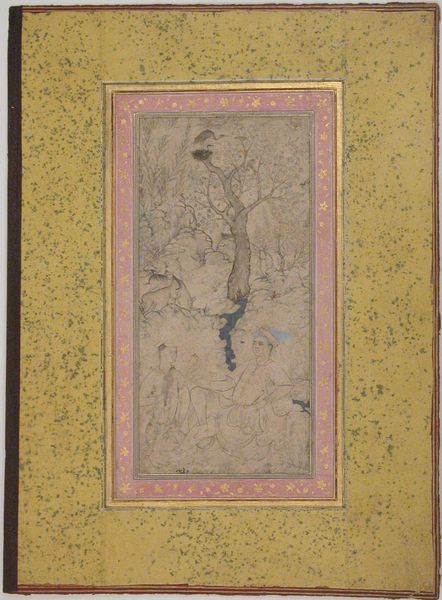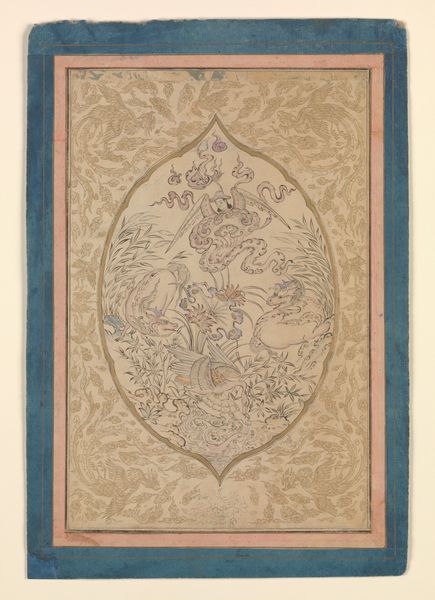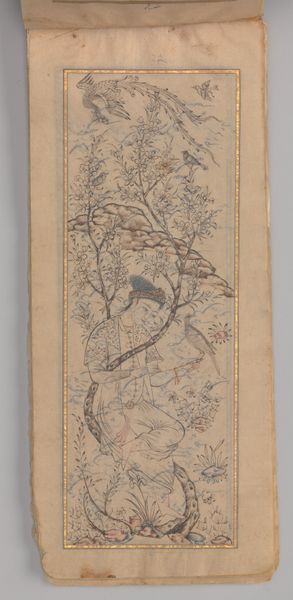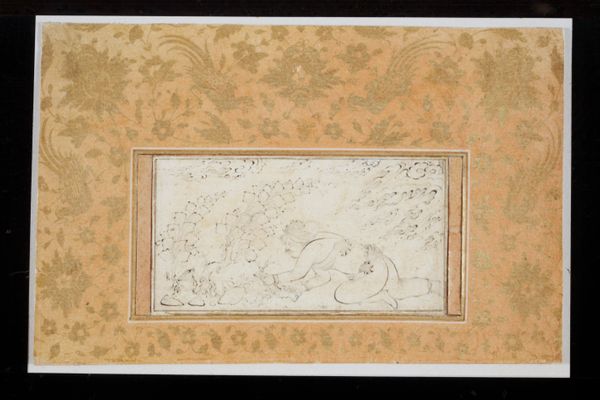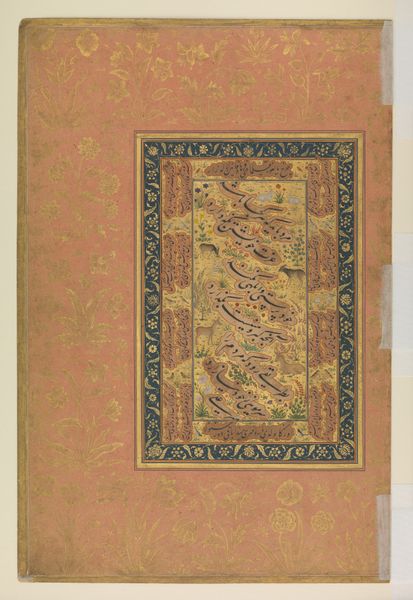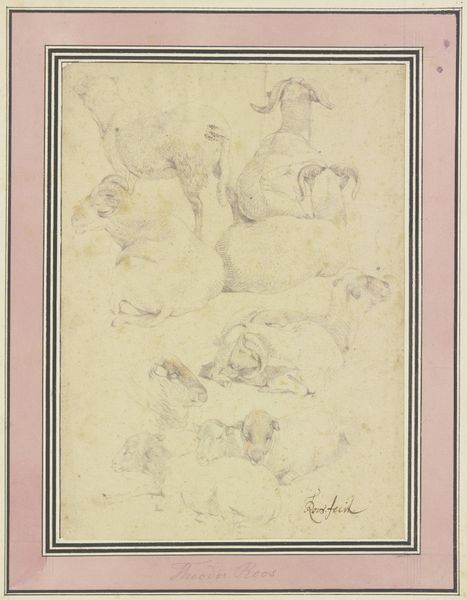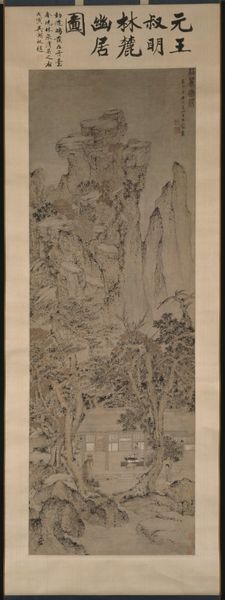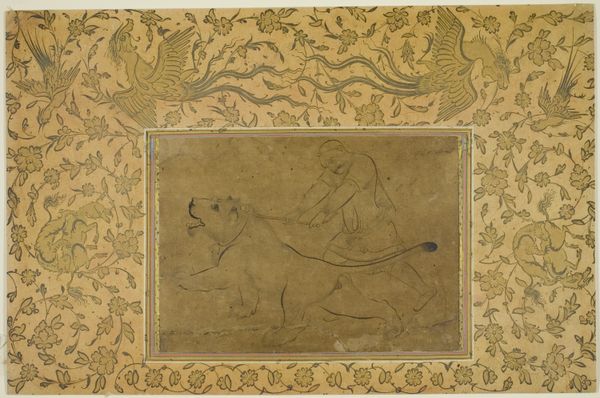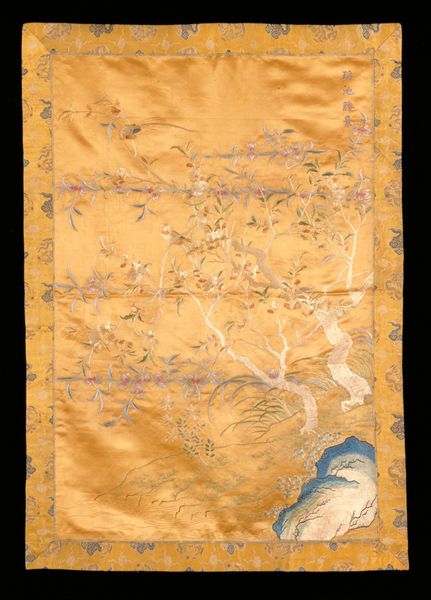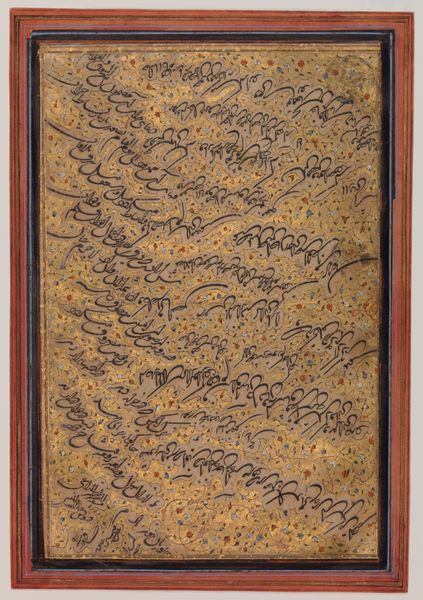
drawing, paper, ink
#
drawing
#
ink painting
#
landscape
#
paper
#
ink
#
orientalism
#
islamic-art
Dimensions: Painting: H. 7 1/2 in. (19.1 cm) W. 4 3/4 in. (12 cm) Page: H. 14 1/8 in. (35.9 cm) W. 9 3/16 in. (23.3 cm) Mat: H. 20 1/2 in. (52.1 cm) W. 16 in. (40.6 cm)
Copyright: Public Domain
Curator: Isn’t it incredible how a few simple lines can convey so much? This piece, "Dragon and Clouds," attributed to Sadiqi Beg, created sometime between 1575 and 1625, showcases such a minimalist approach. It’s ink on paper. Editor: Stark. My first thought is just…stark. The almost total lack of color amplifies the raw power in that dragon’s form and evokes a sense of quiet contemplation, almost mournful, like a ghost story half-whispered. Curator: A ghost story, that’s a very poetic take! I find it rather dynamic, that swirling energy. Note how the artist uses varying line weights to suggest depth and movement. The dragon isn’t static; it’s writhing, almost dancing amidst those stylized clouds. Editor: Dancing on a precipice, perhaps? I see it as a reflection of the social unrest and the instability in the late 16th-century Safavid Empire. The dragon, often a symbol of power, is here rendered almost vulnerable, intertwined with turbulent skies. It’s like Sadiqi Beg is commenting on the precarious balance of power and the looming storms of political change. Curator: That's fascinating, and the historical context is crucial. For me, personally, the piece speaks to the enduring power of myth and symbol. The dragon, a creature of immense imaginative scope, transcends its historical moment. There's a timelessness to its struggle, almost universal. Editor: Absolutely, these symbols echo across cultures, yet within Islamic art, we often find this creature representing a challenge to cosmic order, a powerful and liminal presence neither wholly good nor evil. Its representation here forces us to question those imposed boundaries, those stark definitions. Curator: Which the artist seems to push with those subtle gradations in the ink. They evoke the intangible; the play between light and shadow. There's something in the simplicity that demands the viewer’s active engagement, doesn’t it? Editor: It certainly does. This image resonates with a sense of profound inquiry and maybe even gentle defiance, urging us to find the narratives within the void, the meaning between the strokes. Curator: Exactly! The dance between what’s depicted and what’s left unsaid becomes the true heart of the artwork. It really sparks something. Editor: It reminds us that even the barest representation can carry weighty dialogues around cultural context, societal power structures, and timeless narratives.
Comments
No comments
Be the first to comment and join the conversation on the ultimate creative platform.
